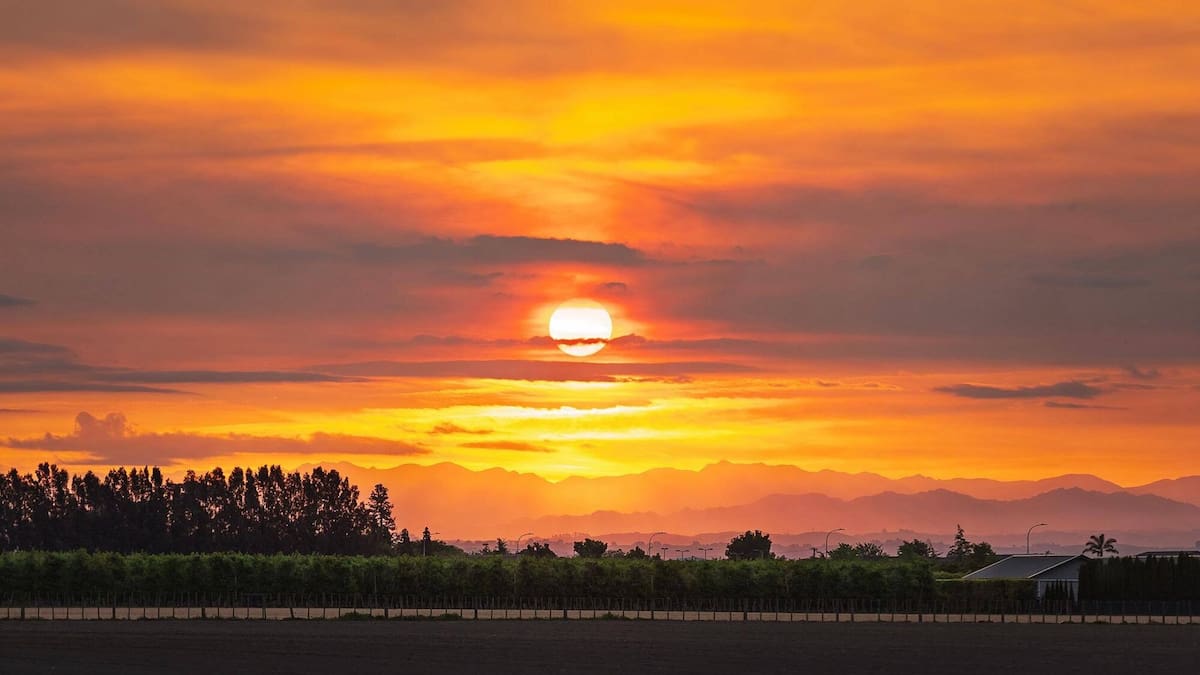MetService meteorologist Alwyn Bakker said this was because the particles from fire were scattering light.
“The reason why sunsets in general are redder is because the light from the sun is essentially scattering differently than when it’s directly overhead.
“So when it’s directly overhead, we get the blue light that is being scattered by the atmosphere. At sunset, sunrise, the angle has changed, so we’re getting the redder light.
“With all of the ash and smoke from all of the fires, things are getting scattered more.
“So we get those really incredibly red, incredibly vivid sunsets when that kind of stuff happens.”
Bakker said if you imagine a beam of light moving through the air and when it encounters things it can bounce off or interact with them, changing the light pathway.
“If you think of a rainbow, that’s where all of the light splits out and different colours of light split out to different points on the rainbow.
“[But] the red light splits out further and bends more than the other colours of light.
“So when the sun’s at a really low angle, we’re seeing that light that’s been split out the most and when you’ve got a lot of particles in the atmosphere, like the ash from the fires or the smoke, that is splitting out the red light more.”
A Hawke’s Bay Regional Council spokeperson said the air quality was being monitored.
“At this stage, monitoring stations in Napier and Hastings have not recorded any increase in PM10 or PM2.5 levels (the fine particles in smoke and dust that can affect air quality and health when inhaled).
“We will continue to monitor and review air quality data over the coming days.”
Jack Riddell is a multimedia journalist with Hawke’s Bay Today and has worked in radio and media in the UK, Germany, and New Zealand.
